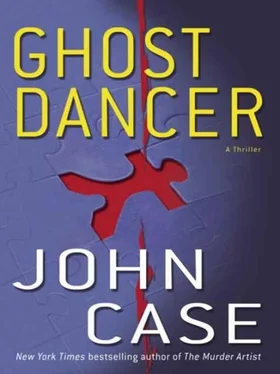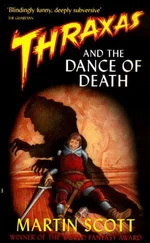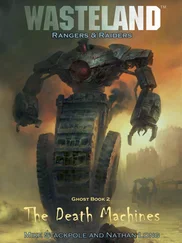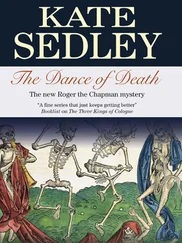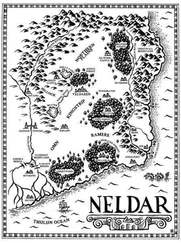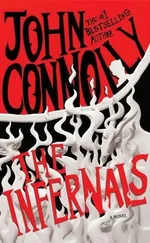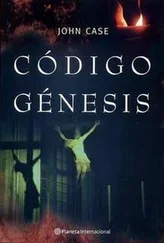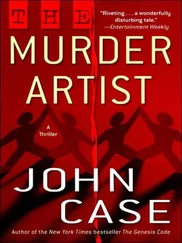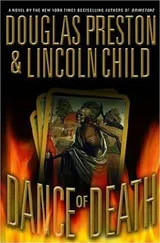“But-”
“He’s gettin’ a telescope. Told Charley all about it. Not some rinkydink job, like you’d use for peepin’. This thing’s some kinda Wernher Von Braun model. Got a forty-inch mirror, or somethin’.”
“What are you talking about?” the Ufologist complained.
“I’m just telling you what Charley told me.”
“And what’s any of that got to do with springs ?” the Bat asked.
The bartender sighed for a second time, letting them know that their obtuseness was trying his genius – and his patience. “If you’re lookin’ at stars and galaxies and shit, you gotta have a stable foundation, or you ain’t gonna see fuck-all. Any kinda disturbance – I don’t care if a truck goes by or a mouse farts – that’s it! Whatever you were lookin’ at, you lost it! One second you’re starin’ at the Big Dipper, then the mouse cuts loose and you’re lost in space, my friend. Lost. In. Space! Scope’s shaking all over the place.”
“I still don’t know what the springs are for,” the Bat said, sounding exasperated.
The bartender shook his head. His customers were the cross he bore. “Let me spell it out for you,” he told them. “He’s jackin’ up the lookout tower, and puttin’ it on springs. So there’s no vibration. It’s like a private observatory.”
The Ufologist’s eyes dilated with excitement. “I knew it! It’s like the embassy in Moscow! The spooks got a special room there. Put it on springs? That way, no one can eavesdrop on them.” He paused. “Well, they can, ” he said, “but they can’t hear anything. On account of there’s no vibration. This guy, Wilson, he’s probably some kind of spook himself.”
The poker players looked at one other, eyebrows raised.
The bartender lifted his glass. “ Klaatu verada nikto, my man.”
It was a busy time for Wilson.
On a weekend trip into Reno, he put together a work crew of Mexican migrants, day laborers who waited with others each morning in the parking lot outside a 7-Eleven, making themselves available for work. There were four of them, and they didn’t mind living in the wilderness for a few weeks, if the pay was right. And it was.
Meanwhile, he bought short-term supplies for himself, and a lot of things for the future: tires and seeds and freeze-dried foods. Tools and deep-cycle batteries, clothing, books, and staples. Flour, rice, and redundant systems for purifying water.
Outside the Busted Flush Casino, he found a whore pacing back and forth on the street corner. She was asking fifty bucks for a trick, but he gave her a hundred to introduce him to “a writing doctor.” Two hours later, he had prescriptions for Percocet and Cipro, Valium, and half a dozen other drugs. Anything else he needed, he could buy over-the-counter.
What he couldn’t bring in by truck was delivered by helicopter. Beside the cable, rebar, and storage tanks, he flew in a truckload of lumber, along with a pile of solar panels that might come in handy someday.
Guns were a bigger challenge. Because of his felony conviction, the Guns “R” Us store in Reno was out. But this was more of an inconvenience than a deal breaker. He found an over-and-under shotgun, a Glock, and a Beretta at a Sunday-morning gun show in the Yerington High School gym. Even better, a classified ad in the Pahrump Valley Times offered an Ingram submachine gun (“barely used”). He didn’t hesitate. These few weapons should be enough, he thought, to keep intruders at bay in the early days. After that, it wouldn’t matter.
As for the house, he had a check-off list. Before the day he had to cut it off from the grid and make certain that his collection of generators were not even close to anything that might carry a charge.
The most important aspect of the B-Lazy-B, aside from its remoteness, was its proximity to a fire-lookout tower built by the Civilian Conservation Corps in the 1930s. Nine out of ten such towers had been torn down over the years, but in the late 1990s, preservationists acted to save the ones still standing. A lot of them had been restored and were actually available for rent – although only the adventurous were likely to be interested. Most lacked plumbing and running water, and staying in one was like staying in a lighthouse. You had to enjoy stairs.
Half a mile from the ranch house, Little Mount Baker Outlook was one of the last towers on the restoration list. Unlike some of the other towers, the cab atop Little Mount Baker had no amenities. Those who’d manned it had stayed in a wooden cabin (now tumbled down), a hundred yards away.
It was a world apart from the structure that Tesla had built at Wardenclyffe with J. P. Morgan’s money. But at an elevation of seventy-two hundred feet, it had clear sightlines in every direction, and was almost perfectly suited to Wilson’s purposes.
The weapon, as Wilson thought of it, wasn’t a problem in and of itself. Tesla had built something very much like it more than a hundred years ago, and he hadn’t had the Internet to help him. In effect, the Serb had had to invent or build from scratch what Wilson could buy with the click of a mouse from an electronics warehouse in Canada.
The problem was the lookout tower.
For the tower to serve its purpose, three things were necessary. At Wardenclyffe, Tesla had sunk a blade of metal 128 feet into the earth to capture the “standing waves” of electricity that he needed for the magnifying transmitter. Wilson accomplished the same end with the help of a one-man show known as the Black Mountain Drilling Company.
Against the advice of its proprietor, Wilson suggested that he drill for water at a site directly beside the tower. The well man objected. “There ain’t no water there,” he said, “or if there is, it’s deep. And it’s under a whole lot of ledge. Why don’t we just-”
Wilson insisted. It was his money.
The well man complied. Over the course of a week, he broke five bits, cursing explosively each time. Wilson was terrified that he was about to strike water, and let him go as soon as he reached 130 feet. “I gotta rethink this,” Wilson explained, paying him generously for his time and effort and all the broken bits.
With the shaft bored, Wilson arranged delivery of a truckload of custom-forged iron rods, each five feet long and four inches thick. One by one, he and the work crew lowered the rods into the recently bored hole, using gravity to create the conductive metal shaft that he required.
This done, Wilson supervised the Mexicans in spooling the cable from the generator to the base of the tower, half a mile away.
The third task was hardest of all. The tower – and, in particular, the cab at the top – had to be stabilized. This is where Tesla had an advantage. Stanford White was one of the great architects of his time. Taking Tesla at his word when the inventor insisted that the structure must be steady as a rock, White designed the Wardenclyffe tower in such a way as to make it as stable as an observatory.
Like Philippe Petit, the French aerialist who walked a wire between the World Trade Centers in 1974, White understood the problems of torsion and sway. As did Wilson. Any motion at all would derange the beam.
Like the dome on the Wardenclyffe tower, the cabin atop Wilson’s lookout rested on an open framework. With the Mexicans doing the heavy lifting, Wilson reinforced the framework with I-beams made of steel, and installed pressure transducers. Hooked up to a computer, the transducers tracked changes in pressure in the tower’s framework. This allowed Wilson to pinpoint the places for damping mechanisms. Tuned to the resonant frequency of the tower, the dampers went a long way toward stabilizing the structure under the cabin.
Читать дальше
